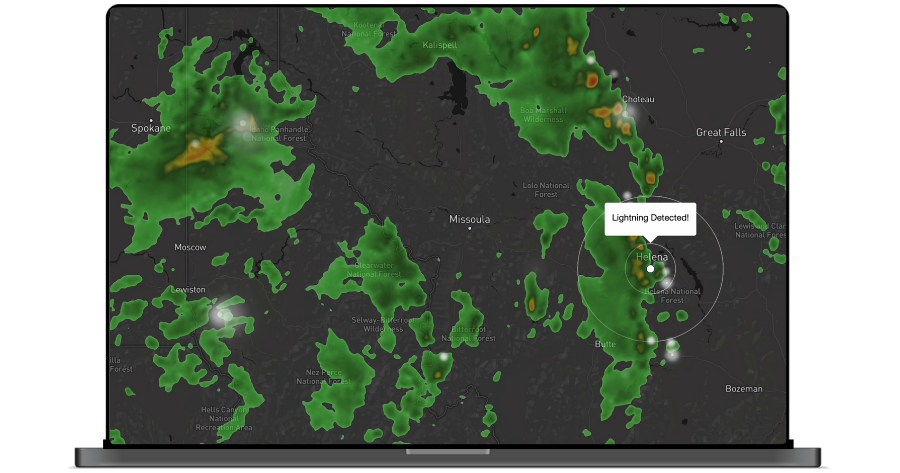MCP release
Engineered for reliability
Vaisala Xweather delivers high-resolution, real-time data through a globally distributed infrastructure
Our weather API is continuously supported by researchers working to enhance accuracy, reliability, and data depth.
Built for stability, uptime, and scale
Every release is backed by rigorous unit testing, dedicated QA oversight, and load testing across environments, then deployed on a multi-region cloud infrastructure powered by AWS and its global content delivery network.
AI-enhanced weather insights
Xweather’s weather API uses machine learning models, refining forecasts in real time to deliver highly precise and hyperlocal weather insights.
Expert support
Our customer success team works alongside your team to ensure seamless integration and long-term value from our weather data solutions.
API endpoints
Beyond global forecasting, our API unlocks access to high-resolution datasets and one-of-a-kind weather endpoints built for advanced applications.
Lightning
Xweather's lightning endpoints give you real-time and historical lightning data, threat zones, and analytics—backed by the world’s most trusted lightning detection network.
Track strikes, flashes, and threats with pinpoint accuracy, from nowcasts to archives dating back to 2016.
Map lightning threat zones and density trends
Integrate high-resolution global data into your systems via API, webhooks, or MapsGL
Phrases API
The Phrases API transforms raw weather data into real-time, natural language summaries—so users understand the forecast without needing a meteorologist.
Customizable, AI-generated summaries in 50+ languages for alerts, conditions, and activity-specific impacts
Personalize tone and delivery style—from casual to broadcast-ready
Ideal for apps, media, logistics, emergency comms, and even social posts
Severe weather endpoints
Explore severe weather endpoints that deliver real-time and historical insights on extreme weather, helping businesses track, prepare for, and respond to disruptive events.
Global government-issued alerts available in
Impact-based intelligence – Activity-specific weather insights to assess risk by business need (
/impacts/:activity)Deep historical access – Archives for hail, lightning, and storm reports dating back decades for validation and planning
Maritime
Xweather’s Maritime API endpoint delivers global, high-resolution marine weather data with 6-hour update cycles and customizable time intervals.
Monitor waves, currents, tides, and storm surge
Access forecasts up to 15 days ahead, plus 48-hour history
Query by location or route to support vessels in motion
Impacts
The Impacts API endpoints forecast how current and short-term weather conditions affect specific activities across land and sea, helping users assess operational risks in real time.
Supports location (
:id) and route-based queries to evaluate impact severity (0–5) for activities like trucking, outdoor events, and maritime operations.Integrates drivers like lightning, extreme temperatures, wind, road weather, and air quality into impact scores with supporting metadata.
Provides near real-time forecasts and risk evaluations with full global reach, updated continuously for timely situational awareness.
Integrations made easy
Developer SDKs + Toolkits
Our software development kits for iOS, Android, and JavaScript make it easy to integrate Xweather data into your apps and platforms—with the tools you need to move from prototype to production.
Explore endpoints and test queries
Our API wizards make it easy to access advanced weather data and imagery—no technical background required. Whether you're exploring options or deploying a solution, you’ll get the insights you need in just a few clicks.


Webhooks and pushed data
Xweather webhooks provide timely notifications of the weather events that you care about most. Eliminate the need for continuous polling, along with the need to worry about missing critical alerts. Webhooks deliver all of your weather events - whether it be lightning, approaching storms, or other - rapidly and directly right to you. Contact our team to explore configuration options and access.
Advanced mapping libraries
Get in touch with our experts
Our experts are here to help you evaluate the right solution for your operational and technical needs.
FAQs
Where does Xweather get its weather data?
How do you set up a webhook endpoint?
How do I integrate the weather API into a Next.js project?
What is API rate limiting?
Can I access Xweather data through my preferred data platform?
How can I protect my Weather API credentials?